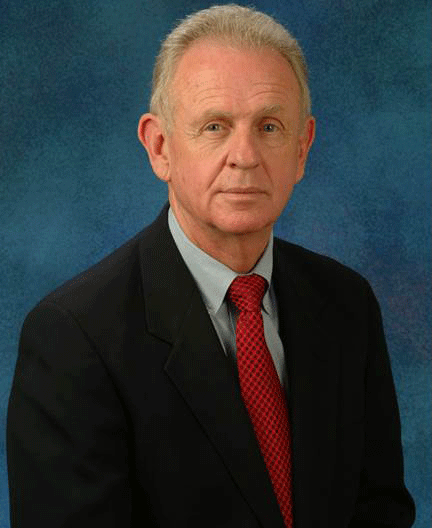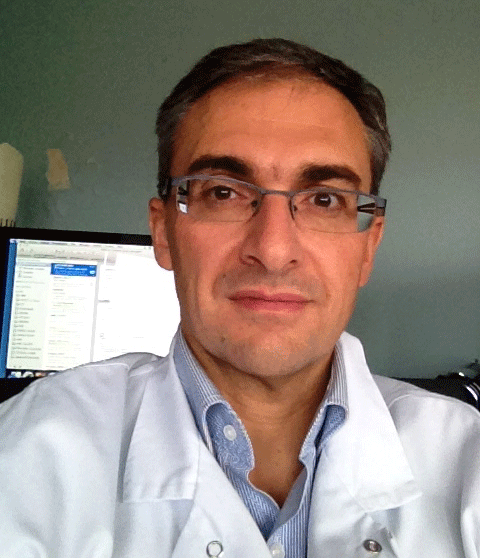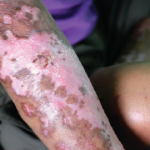BOSTON—In a session titled, Fibrotic Complications of Scleroderma, at the ACR/ARHP Annual Meeting in Boston in November 2014, a panel of experts talked about complications and management of the skin, lung and heart in patients with systemic scleroderma (SSc).
Management of Skin Fibrosis

Oliver Distler, MD, professor of inflammatory rheumatology, Division of Rheumatology, University Hospital Zurich, Switzerland opened the session with a discussion on the challenge of selecting appropriate SSc patients with skin fibrosis for treatment: Those with early diffuse skin fibrosis for whom treatment is needed to prevent progression before skin degradation occurs. Citing data showing a high individual variability among patients in developing skin fibrosis over time, he emphasized that selecting patients for treatment of early disease can be a difficult task given the high individual heterogeneity of the disease.1
To address the problem of predicting progression of skin fibrosis in patients, he cited a prediction model recently published using the EUSTAR database.2 Among the prediction markers included in the model, he emphasized two important parameters that predict the likelihood for progression of skin fibrosis—early disease and low mean modified Rodnan skin score (MRSS) at baseline.
Patients who have had the disease for less than 15 months are more likely to have progressing disease. A stronger and more consistent predictor, he said, is a low MRSS at baseline. Patients with a higher MRSS at baseline rarely have disease progression, but more patients with lower MRSS at baseline do have disease progression.
“We should start to change our clinical practice to start to treat diffuse SSc patients with lower MRSS as early as possible,” he said. He also emphasized the importance of referring patients with early disease and lower MRSS at baseline faster to SSc expert centers to allow for early intervention. The current referral time of 9–12 months from first onset of skin changes needs to be improved.
As for treatment, Dr. Distler emphasized that options remain limited to treat skin fibrosis in these patients. No treatments are advised for skin fibrosis in patients with limited SSc or in those with diffuse, longstanding inactive SSc. For patients with diffuse, active progressive SSc there is some evidence for methotrexate, and he uses it in his practice particularly for patients who also have arthritis. There is also some evidence from Phase 2 randomized controlled trials or observational controlled studies that tocilizumab and rituximab might be helpful for patients with diffuse SSc. Some investigators also use mycophenolate mofetil (MMF) and cyclophosphamide for patients with early, active disease in particular when there is coexistence of interstitial lung disease. For patients at the highest risk of death, he provides information to his patients on the risks and benefits of stem cell transplantation and emphasizes the need for better risk assessment of this treatment for mortality and treatment for internal organ involvement.
He ended his talk saying that the future is bright regarding new treatment options that are on the horizon and entering Phase 3 clinical trials in the next years.
Assessment & Management of Interstitial Lung Disease

Philip Clements, MD, MPH, Professor of Medicine, David Geffen School of Medicine, University of California, Los Angeles (UCLA), Los Angeles, spoke on interstitial lung disease (ILD) in patients with SSc emphasizing that ILD occurs in patients with both limited SSc and diffuse SSc.
With evidence-based data, he highlighted predictors of progressive ILD in patients with SSc that include: 1) early disease (first five or six years of SSc); 2) presence of anti-SCL-70 antibody (antitopoisomerase); 3) greater than 20–25% fibrosis in lung fields on HRCT of chest; and 4) decline over one year in percentage of forced vital capacity (FVC) of ≥10% or % lung diffusion capacity testing (DLCO) of ≥15%. He also emphasized that significant ILD is infrequent in patients with anticentromere and less common in patients with anti-RNA polymerase III antibody.
To assess patients, he suggested that all SSc patients in the first five years of disease have spirometry and diffusing capacity every six months. In patients with declining percentage of FVC, he recommends every three months during treatment. He also recommended getting the results of the predictors of progressive ILD mentioned above.
For treatment, he said cyclophosphamide (CYC) is currently the therapy of choice for patients with the following demographic and clinical features: SSc of seven years or less, at least 18 years old, percentage of FVC <75% and/or documented decline of percentage of FVC >10% or a DLCO of >15% in the last 12 months, fibrosis on high-resolution computed tomography (HRCT) involving >20–25% of any lung field, Level 2 dyspnea. This treatment approach is standard regardless of sex and diffuse or limited SSc. Table 1 lists the treatment approach at his clinic.
| Table 1: Treatment Approach |
|---|
| Pulse CYC monthly at 600 mg/m2 for 6–12 months (assuming normal renal function). |
| Repeat pulmonary function testing every three months while on CYC. |
| After completing CYC infusions (induction), switch to mycophenolate mofetil 2–3 grams/ day orally and continue drug for several years as maintenance therapy. |
He ended his talk saying that the current approach to risk assessment will be around for a while, but that treatment may change and be eclipsed in the next five years by newer, more targeted therapies.
Primary Cardiac Involvement & Management

Yannick Allanore, MD, PhD, Department of Rheumatology, Cochin Hospital, Paris Descartes University, France ended the session emphasizing the importance of the heart to life expectancy in patients with SSc and the high risk of morality in SSc due to cardiac death.
Saying that heart disease is quite common in patients with SSc, Dr. Allanore emphasized the importance of regular systematic assessment targeting subclinical involvement, which is the most common type of involvement. He also stressed the importance of educating patients in the warning symptoms of heart disease, including increased dyspnea, chest pain and palpitations, and said the assessment of these symptoms should be a part of the routine clinical assessment for heart disease in these patients.
He recommended that patients undergo the following at least yearly: electrocardiogram (ECG) and natriuretic peptides, 24 h-Holter in case of abnormal ECG and/or symptoms, and Doppler echocardiography by a trained cardiologist.
For treatment, he said that systemic and long-term use of vasodilators, such as calcium channel blockers, can be used to manage vasculopathy. To treat left ventricular systolic dysfunction, he said that angiotensin-converting enzyme (ACE) inhibitors are usually recommended. However, he said the big challenge that remains for cardiologists is how to treat left heart diastolic dysfunction. Although no evidence shows any benefit with any current drugs, he said some data suggest a benefit with calcium channel blockers.
Mary Beth Nierengarten is a freelance medical journalist in St. Paul, Minn.
Second Chance
If you missed this session, Fibrotic Complications of Scleroderma, it’s not too late. Catch it on SessionSelect: http://acr.peachnewmedia.com/store/provider/provider09.php.
References
- Merkel PA, Silliman NP, Clements PJ, et al. Patterns and predictors of change in outcome measures in clinical trials in scleroderma: An individual patient meta-analysis of 629 subjects with diffuse cutaneous systemic sclerosis. Arthritis Rheum. 2012;64(10):3420–3429.
- Maurer B, Graf N, Michel BA, et al. Prediction of worsening of skin fibrosis in patients with diffuse cutaneous systemic sclerosis using the EUSTAR database. Ann Rheum Dis. 2014; Jun 30. pii: annrheumdis-2014-205226. doi: 10.1136/annrheumdis-2014-205226. [Epub ahead of print].

